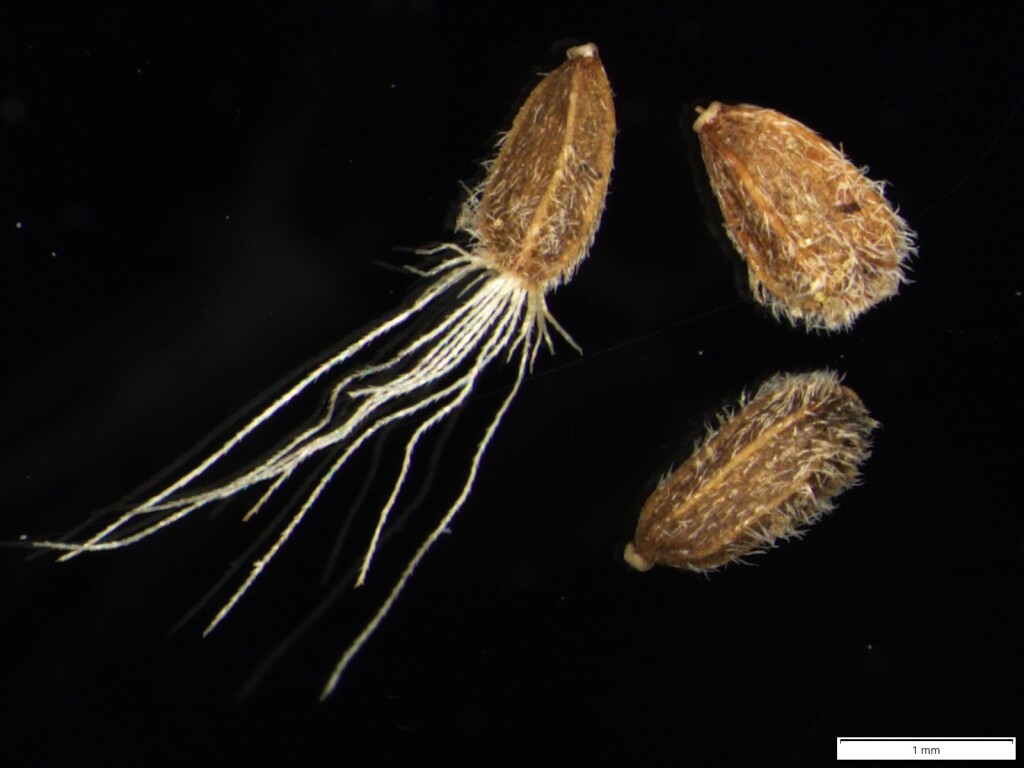Olearia phlogopappa subsp. salicina
(Hook.f.) MessinaSpindly upright shrub to 2 m high. Leaves thin-textured, lanceolate to narrow-linear, 27–120(–150) mm long, 4–12 mm wide; margins entire; upper surface green, with mid-dense to sparse stellate hairs, glandular; lower surface white or cream, moderately to densely stellate hairy, with scattered to numerous sessile glands; petiole 2–5 mm long. Capitula pedunculate, in loose terminal or subterminal panicles or corymbs. Flowers Oct.–Dec.
VVP, OtP, WaP, GGr, OtR. Also Tas. Restricted to the Otways, Anglesea-Lorne area and southern Grampians, in a range of habitats from tall wet forest to dry woodland.
This taxon has only recently been recognised in Victoria, with plants previously included in O. lirata or O. viscidula (F.Muell.) Benth. (the latter only occurs on inland slopes in New South Wales and is readily distinguished by its viscid, opposite leaves). It has been overlooked in Victoria due to the close resemblance with O. lirata. Despite these similarities in leaf shape, O. phlogopappa subsp. salicina can be distinguished by the densely glandular leaves that have a strong unpleasant odour when crushed and relatively indistinct secondary venation. Olearia lirata occurs in close proximity to this subspecies at all known sites, and within any site, plants may be further distinguished by the relative leaf size, with O. lirata having consistently larger (at least wider) leaves.
 Spinning
Spinning